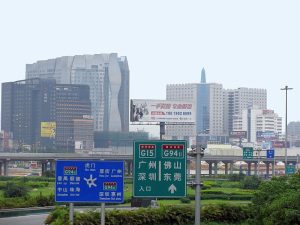Dongguan city in Guangdong province, once heralded as the epitome of China’s industrial prowess as the “world’s factory within the world’s factory,” now presents something of a sobering picture. The closure of Dongguan Gogo Garment, the city’s largest lingerie manufacturer, on January 10 came as a shock. The company cited dwindling customer orders and failed attempts to break into the domestic market as the reasons behind its downfall.
Founded in the 1980s, Gogo Garment had specialized in Original Equipment Manufacturer (OEM) production for prestigious international lingerie brands, boasting a workforce that had grown to nearly 10,000 employees at its peak. Spanning tens of thousands of square meters, it had been the trusted partner for renowned global high-end lingerie brands, weathering tough market competition for 43 years. However, despite its resilience, the company succumbed to bankruptcy this year.
Gogo Garment’s plight is not an isolated case in Dongguan. In July 2022, Koppo Electronics, a Fortune 500 company that had employed more than 6,000 workers, also made the heart-wrenching decision to cease operations due to unpaid cross-border e-commerce payments, a backlog of finished goods, and a sharp decline in domestic and international orders.
Even with the easing of COVID-19 measures earlier this year, the situation has not improved significantly. Many factories in Dongguan are grappling with heavy burdens and teetering on the brink of collapse, with the imminent risk of closure looming over them.
A plethora of factories are grappling with prolonged shutdowns and leaves of absence. Despite hopes that surviving 2022 would bring relief, the reality is stark as there are no signs of improvement yet in 2023. Many manufacturing companies in the region have observed a significant shift in global supply chains, with no orders received this year. Factory closure notices are becoming increasingly succinct.
In fact, the dire situation of shutdowns, closures, bankruptcies, and collapses is not limited to Dongguan alone, but extends to the entire Pearl River Delta region, including the Greater Bay Area. Many of the quintessential “Made in China” manufacturers, which have persevered and struggled until the end, have not been spared from the unfolding crisis. These well-established enterprises, some with decades of business history, had assumed their prosperity would be everlasting. However, the reality is harsh as both private and state-owned manufacturing industries in the southeastern coastal regions of China face unprecedented challenges.
The real estate sector’s ability to weather the storm in light of the current state of manufacturing is questionable. While some may wishfully think that it will, that assumption is far from reliable. The housing market is facing significant challenges, with many properties struggling to sell. As of February this year, an estimated 3.5 billion square feet of completed residential buildings in China remained unsold, equivalent to around 4 million residential units. Real estate consulting agencies estimate that approximately one-third of all newly constructed homes in China in 2022 remain unsold, marking the highest proportion since 2015.
From an economic development perspective, the most straightforward and uncomplicated path to prosperity is through land and real estate development. This is considered simple because one can potentially make substantial profits simply from owning a piece of land. However, this seemingly effortless approach to wealth accumulation relies on assumptions that houses will always be sellable, people will always have stable employment with consistent wage and income growth, investments will perpetually yield positive returns, and real estate prices will continue to rise while social inflation remains unaffected.
While this facade has been sustained for an extended period of time, when the deep-rooted issues of the manufacturing industry eventually detonate, they will lead to the collapse of all these assumptions about China’s economy. The lack of employment opportunities leaves people unable to purchase houses, and those who have already purchased houses will struggle to repay their mortgages.
Given the challenges faced by the manufacturing and real estate sectors in China, there may be a need to shift the focus of the economy toward the agricultural sector in the future. The potential decline in the industrial economy could be more severe and rapid than anticipated, with only military-industrial enterprises showing willingness to invest despite costs. However, it is important to note that even these enterprises can face obstacles when it comes to funding. As the country navigates through these economic uncertainties, a strategic shift in focus toward agricultural development may offer a viable pathway to economic stability and growth.

































